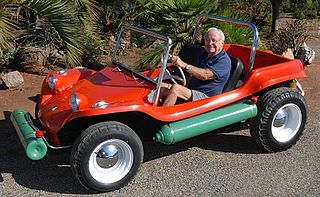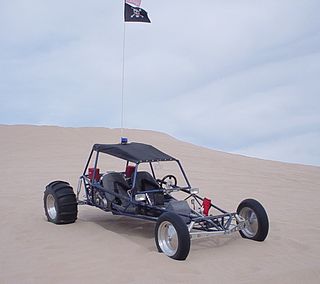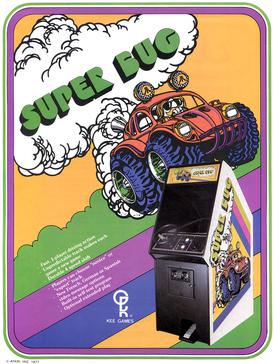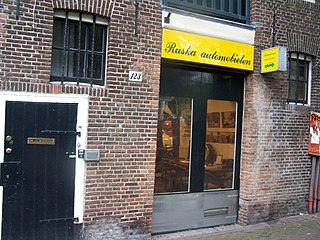
Volkswagen, abbreviated as VW, is a German motor vehicle manufacturer headquartered in Wolfsburg, Lower Saxony, Germany. Founded in 1937 by the German Labour Front under the Nazi Party and revived into a global brand post-World War II by the British Army Officer Ivan Hirst, it is known for the iconic Beetle and serves as the flagship brand of the Volkswagen Group, the largest automotive manufacturer by worldwide sales in 2016 and 2017. The group's biggest market is in China, which delivers 40 percent of its sales and profits. Its name is derived from the German-language terms Volk and Wagen, translating to "people's car" when combined.

The Volkswagen Beetle—officially the Volkswagen Type 1, informally in German der Käfer, in parts of the English-speaking world the Bug, and known by many other nicknames in other languages—is a two-door, rear-engine economy car, intended for five occupants, that was manufactured and marketed by German automaker Volkswagen (VW) from 1938 until 2003.

A dune buggy — also known as a beach buggy — is a recreational motor vehicle with large wheels, and wide tires, designed for use on sand dunes, beaches, off road or desert recreation.

The Love Bug is a 1968 American sports adventure comedy film directed by Robert Stevenson from a screenplay by Bill Walsh and Don DaGradi, based on the story "Car, Boy, Girl" by Gordon Buford. The film is the first installment in the Herbie film series.
Car games are games played to pass the time on long car journeys, often started by parents to amuse restless children. They generally require little or no equipment or playing space. Some such games are designed specifically to be played while traveling, while others are games that can be played in a variety of settings including car journeys.

A Baja Bug is an original Volkswagen Beetle modified to operate off-road, although other versions of air-cooled Volkswagens are sometimes modified as well. Baja bugs often race in off road desert races such as the Baja 1000. There are different classes for bugs, namely class 11, class 5 1600, and class 5 unlimited. According to desert racing association Score International, class 11 is a stock VW beetle with modifications limited to ground clearance and strength. Class 5 1600 rules state that a 1600 cc VW engine must be used and the car must have the exterior appearance of a "baja bug" with body modification limited to whatever cutting is needed to install a consumer baja kit. Class 5 unlimited is any 4 cylinder VW-style engine, and it must have Baja-style fenders and side panels, and VW-style suspension.

The Volkswagen New Beetle is a compact car, introduced by Volkswagen in 1997, drawing heavy inspiration from the exterior design of the original Beetle. Unlike the original Beetle, the New Beetle has its engine in the front, driving the front wheels, with luggage storage in the rear. Many special editions have been released, such as the Malibu Barbie New Beetle.

The Meyers Manx dune buggy is a small recreationally-oriented automobile, designed initially for desert racing by Californian engineer, artist, boat builder and surfer Bruce F. Meyers. It was produced by his Fountain Valley, California company, B. F. Meyers & Co. from 1964 to 1971, in the form of car kits applied to shortened chassis of Volkswagen Beetles. The car line dominated dune racing in its time, breaking records immediately, and was eventually also released in street-oriented models, until the company's demise due to tax problems after Meyers's departure. New vehicles inspired by the original Manx buggy have been produced by Meyers's re-founded operation, Meyers Manx, Inc., since 2000. The name and cat logo of the brand derives from the Manx cat, by virtue of the tailless breed's and the shortened vehicle's truncated "stubbiness".

A sandrail, also called a sand rail, rail, or sand car, is a lightweight off-road motor vehicle specifically built for traveling in sandy terrain. Similar in some respects and often mistakenly referred to as a dune buggy or sand car, a sandrail is a different type of speciality vehicle. Sandrails are popularly operated on actual sand dunes. Sandrails can be driven on other types of terrain but are designed specifically for sand.

The Volkswagen Country Buggy is a small utility vehicle designed and built by Volkswagen in Australia. It used parts from the existing Type 1 and Type 2. Production ran from 1967 to 1968. A derivative of the Country Buggy called the Sakbayan was built in the Philippines for several years until 1980.
Up'n Down is a video game developed and published by Sega. It was first released in 1983 as an arcade game, then later ported to the Atari 2600, ColecoVision, Atari 8-bit family, and Commodore 64. In Up'n Down the player drives a car forward and backward along a branching, vertically scrolling track, collecting flags and jumping on other cars to destroy them.

The Volkswagen Beetle was introduced to Mexico in March 1954, inside the exhibition "Alemania y su Industria". Four different Volkswagen vehicles were brought to Mexico through Veracruz City for the first time. Those vehicles were: two Sedans 113 in "Export" trim, a convertible, and a VW Bus in luxury trim. Officially, the Bug/Beetle was named "Type I sedan" and the Bus was named "Type II station wagon", though variants included single and double cab pickups.

Super Bug is an arcade game developed, manufactured, and released by Atari, Inc. in 1977. The player steers a yellow Volkswagen Beetle along a multidirectionally scrolling track, avoiding the boundaries and occasional obstacle. The game ends when fuel runs out. Super Bug is in black and white, and the colored car comes from a yellow overlay in the center of the monitor.
The Force is a television advertisement created by to promote Volkswagen's Passat.

The Volkswagen Beetle is a small family car manufactured and marketed by Volkswagen introduced in 2011 for the 2012 model year, as the successor to the New Beetle launched in 1997. It features a lower profile while retaining an overall shape recalling the original Volkswagen Type 1 Beetle.

Beetle Crazy Cup, released in North America as Beetle Buggin', is a 2000 racing video game developed by Xpiral and published by Infogrames for Microsoft Windows. The game features vehicles by Volkswagen as part of a licensing deal between Infogrames and the automotive company.

Ruska was a car manufacturer based in the Netherlands from 1968 to 1981 that manufacturered several open-seater fibreglass-bodied cars and beach buggies. The cars bodies were built on Volkswagen chassis. Ruska are now an automobile repair garage in Amsterdam.
A car-spotting game is one that is played during a car ride, especially a road trip, where occupants of a vehicle compete to be the first to spot a car of a certain description. Many variations exist around the world. The first to call a particular target either scores points which are tracked over the course of the journey, or they earn the right to lightly punch an opponent.















